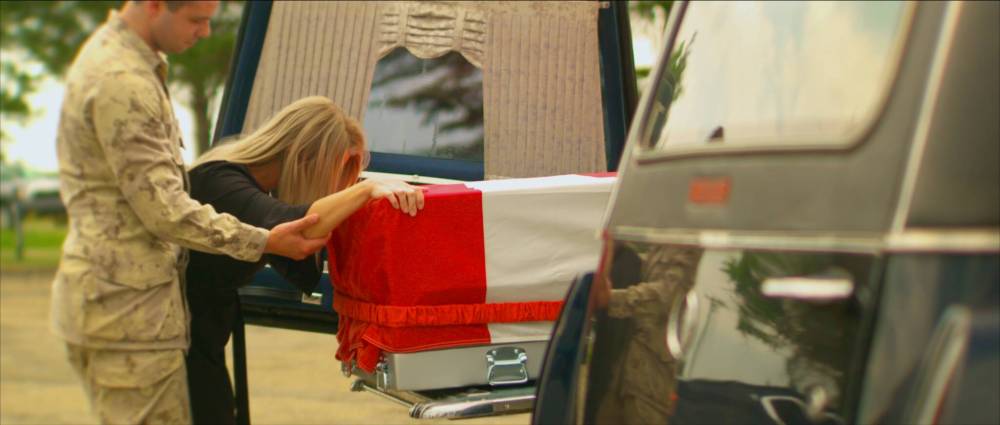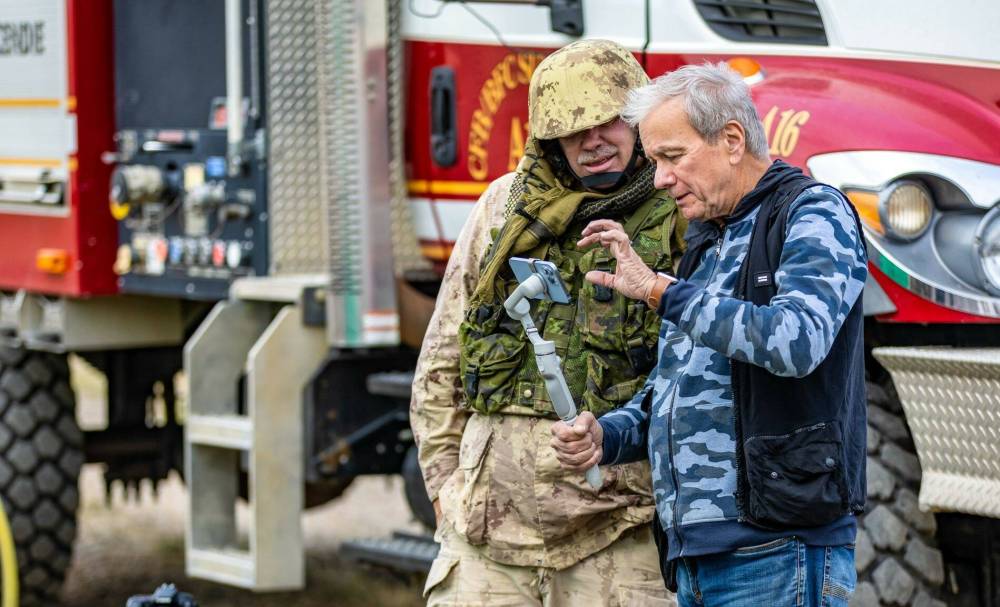‘Fallen Heroes’ screens at Brandon theatre
Advertisement
Read this article for free:
or
Already have an account? Log in here »
We need your support!
Local journalism needs your support!
As we navigate through unprecedented times, our journalists are working harder than ever to bring you the latest local updates to keep you safe and informed.
Now, more than ever, we need your support.
Starting at $15.99 plus taxes every four weeks you can access your Brandon Sun online and full access to all content as it appears on our website.
Subscribe Nowor call circulation directly at (204) 727-0527.
Your pledge helps to ensure we provide the news that matters most to your community!
To continue reading, please subscribe:
Add Brandon Sun access to your Free Press subscription for only an additional
$1 for the first 4 weeks*
*Your next subscription payment will increase by $1.00 and you will be charged $20.00 plus GST for four weeks. After four weeks, your payment will increase to $24.00 plus GST every four weeks.
Read unlimited articles for free today:
or
Already have an account? Log in here »
Hey there, time traveller!
This article was published 04/11/2024 (401 days ago), so information in it may no longer be current.
Coming this week to a Brandon movie theatre is a film that tells the story about how a Canadian soldier fought to create a ramp ceremony in Afghanistan, to honour four soldiers who were killed by an American bomb in 2002, says the film’s director, Robert Curtin.
“The four Canadian soldiers were killed by friendly fire when an American F-16 dropped a 500-pound bomb on them while they were training about three kilometers outside Kandahar airport grounds,” Curtin said.
That first ramp ceremony almost didn’t happen, added Curtin, and the reason it did — followed by 158 other repatriation ceremonies, is because of one insistent soldier.

This image is the re-enactment of the repatriation of the body of Sapper Sean Greenfield. His sister Ainsley Christiensen grieves as the flag-draped transfer case is slid into the hearse for the drive down the Highway of Heroes to the coroner’s office in Toronto, Ont. (Submitted)
And that story is told in the film called, “Fallen Heroes Their Journey Home,” showing tonight and Wednesday at Landmark Cinemas at 7 p.m.
“It’s a remarkable story,” said Curtin, who alongside Karen Storwick the film’s producer, have interviewed hundreds of personnel of all ranks, including Shilo-based 2nd Battalion, Princess Patricia’s Canadian Light Infantry unit.
Curtin and Storwick are cousins, and work in Alberta together at the Military Museums of Calgary. In 2016, they got a contract with the federal government to create a touring exhibit called, “Mission Afghanistan.”
And while they were conducting research and interviews for that project, they met a Canadian soldier named Jim Butters.
In 2002, Butters was a master warrant officer stationed in Afghanistan, who was given the task of creating “some sort of goodbye for the four fallen soldiers who were going to be shipped out.”
Curtin said that while Butters was looking into ways to send their bodies home, he discovered there weren’t enough Canadian flags or transfer cases.
“When we sent soldiers to Afghanistan, we sent body bags only and not transfer cases, which are big aluminum cases for the bodies. And so, we had to go to the Americans and ask, ‘what do you do’?
“The Americans said, ‘We pack the cases full of ice, and then we ship them out under the cover of darkness, so nobody sees,’” said Curtin.
“And Jim Butters told the mortuary affairs people, ‘That’s not the Canadian way.’ So, that night, he actually wrote the plan for what would become the ramp ceremony,” Curtin said.
At first, Curtin added, the plan was denied by the American sergeant major who oversaw the Kandahar base, because of security reasons.
There were about 1,000 Canadian soldiers and 2,000 from the U.S stationed there, “so, they didn’t want 1,000 soldiers standing behind the C-17 aircraft in the middle of a war zone,” Curtin said.
Persistence won, Curtin added, and the Americans relented.
“Three thousand soldiers sent those four bodies home properly,” he said. “And that ended up becoming a ritual that was used throughout the war in Afghanistan, not just by Canada, but by all the coalition forces. In fact, the Afghans created their own ramp ceremony based on what Canada had done,” he said.
When Storwick explained the importance of the ramp ceremonies, she referred to the First and Second World Wars as well as the Korean War, because many of Canada’s soldiers are buried in cemeteries overseas, and “their families never got to see them.”
“It was groundbreaking and so cathartic for the soldiers in the field who were able to be there in such an honouring experience, and I think the families also felt honoured — something that was never done before,” Storwick said.
About 50 per cent of the movie is a recreation of events, filmed and re-enacted in Southern Alberta, at CFB Suffield and in the city of Calgary at its Mewata Reservist Armouries, and at CFB Shilo.
It takes viewers through the day of the bombing, April 17, 2002, and includes Butters’ efforts, and how Canadians reacted when the planes landed at CFB Trenton, Ont.

A still image from shooting the movie, “Fallen Heroes Their Journey Home,” showing tonight and Wednesday at Landmark Cinemas at 7 p.m. The film tells the story of a Canadian soldier who fought for a ramp ceremony in Afghanistan, to honour four soldiers who were killed by an American bomb in 2002. In this image, Robert Curtin (right), the film’s director, instructs Warrant Officer Glenn Miller, (retired) while on location at CFB Suffield in Alberta. (Photo courtesy of Zak Souter-Lucase)
As the soldiers’ remains were escorted from the airbase to the coroner’s office in Toronto, people started gathering to pay their respects.
Many people waved flags as they stood on the side of the road and on bridges along the 170 kilometre stretch of Highway 401. In 2007, it was officially named Highway of Heroes.
Curtin said, as soldiers began coming home after their deployment, the welcome was remarkable at first.
“A number of those soldiers would begin to sob as they spoke about how Canadians were acting when they came home. They would be met at the airport, there would be yellow ribbons tied to trees and so on, it was something they had never experienced before,” said Curtin.
But the more they spoke with soldiers, added Storwick they began to realize that the film also needed to shed light on how some military personnel are suffering “moral injury” because of what they needed to do in the field, and how Canadians put peacekeepers on a pedestal, “but trash the soldiers.”
“Without getting into politics, moral injury also refers to coming home and not having support through Veterans Affairs, that lack of acknowledgement,” Storwick said.
“And the veterans from the war in Afghanistan have had an added gut punch because of the fact that the Taliban took the country back, or it was actually handed to the Taliban, through disastrous political decisions,” she said.
“Imagine being a soldier who fought there, and having your service being negated in that way. What was it all for? And imagine being the family of one of those fallen soldiers. So, it’s been a very, very difficult period of time for Canadians who served in Afghanistan,” said Storwick.
Curtin added the film explores “how we got to Afghanistan in the first place,” and includes the soldiers’ families, and Canadians.
“This is like holding up a mirror and looking at yourself as a Canadian. We need to help Canadians remember how they acted with our personnel on their return,” said Curtin.
“Because very few Canadians have a job where you sign on the dotted line and you are prepared to put your life at risk for the sake of our country.”
» mmcdougall@brandonsun.com
» X: @enviromichele
